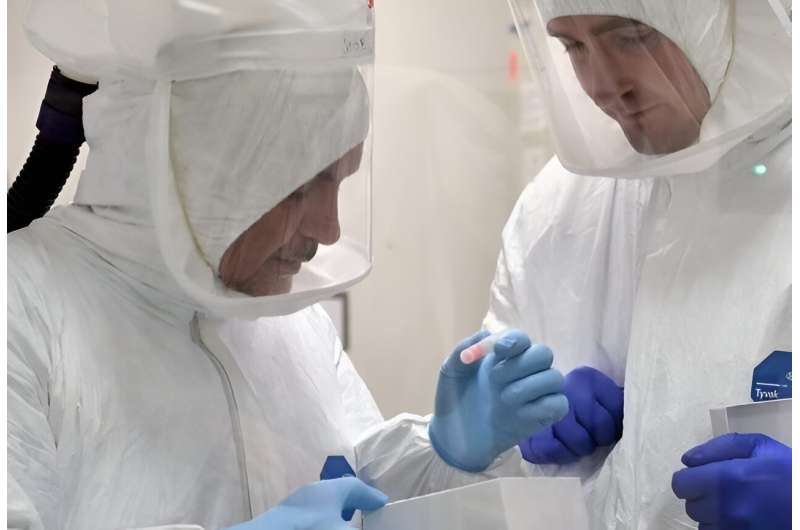This article has been reviewed according to Science X's editorial process and policies. Editors have highlighted the following attributes while ensuring the content's credibility:
fact-checked
proofread
Examining the dynamics of COVID-19's pandemic peak

The SARS-CoV-2 virus swept across the globe at the beginning of 2020, and one of the earliest and hardest-hit areas of the United States was New Jersey.
Hackensack Meridian Health, the state's largest and most comprehensive health network, played a major role in virus detection and tracking of the virus's evolution and dynamics, due to the expertise of the Hackensack Meridian Center for Discovery and Innovation (CDI), the network's research institute.
Now the CDI experts have published their findings in tracking nasal swabs of thousands of patients over a critical 18-month period of the pandemic, with the results published this month in the journal Viruses.
Many of the findings reinforce common understandings of the COVID-19 pandemic—but the data provides compelling new evidence about how important vaccination is.
"Overall, the results reinforce the positive impact of COVID-19 vaccination and the public health benefits of conducting genotypic surveillance of SARS-CoV-2 across a large hospital network," conclude the authors, led by José Mediavilla, M.B.S., M.P.H., infectious disease laboratory supervisor in the laboratory of Barry Kreiswirth, Ph.D., and co-first author Tara Lozy, biostatistician.
The facts established include:
- The CDI team assessed more than 5,000 nasopharyngeal swabs of patients from nine HMH hospitals, from December 2020 to June 2022.
- The cross-sectional view of this part of the pandemic assessed the de-identified swabs to include variants, vaccination status, clinical outcomes, and underlying risk factors.
- The scientists essentially tracked the evolution of the virus, especially in the appearance of successive variants. The major strains identified were alpha, delta, and omicron, the last of which included subvariants BA.1, BA.2, and BA.4/5.
- Unvaccinated individuals made up roughly 80 percent of ICU admissions and ventilator cases, each. Approximately 75 percent of the deaths were among unvaccinated patients, as well.
- Approximately 31.5 percent of the total samples were considered "vaccine breakthrough" cases—most of which were counted during the omicron waves.
- Comorbidities among the group were a significant driver of increasing severity of disease, including ICU admission, ventilator use, and death.
- Age was the most significant factor for such progressively serious outcomes.
"This was an important undertaking," said Mediavilla. "We look at this as one source of ground truth for the changing epidemiology of this pandemic, so that science can better understand real-time evolution of a high-threat respiratory virus."
More information: José R. Mediavilla et al, Molecular and Clinical Epidemiology of SARS-CoV-2 Infection among Vaccinated and Unvaccinated Individuals in a Large Healthcare Organization from New Jersey, Viruses (2023). DOI: 10.3390/v15081699





















